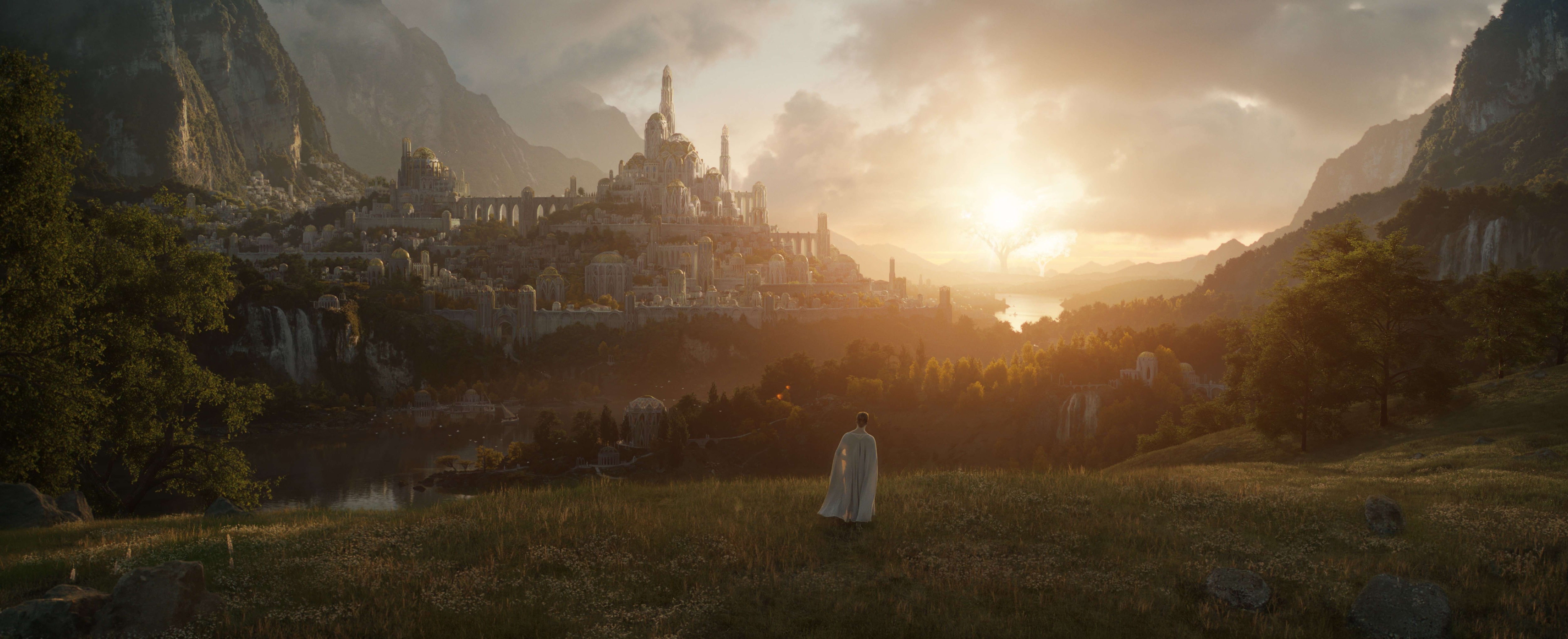Create a free profile to get unlimited access to exclusive videos, sweepstakes, and more!
So how does Amazon's 'Lord of the Rings' series connect to J.R.R. Tolkien's original trilogy?
In a lot of ways, the big-budget project serves as a prequel to The Fellowship of the Ring.

When Amazon's The Lord of the Rings: The Rings of Power lands on Prime Video this September, fans can expect to see a number of familiar Middle-earth faces. Set during the Second Age of supposed peace and prosperity that followed the defeat of Morgoth and his protégée Sauron (you might have heard of him), the series will follow a number of different storylines throughout the sprawling and beloved fantasy universe created by author J.R.R. Tolkien.
Two of the parallel narratives are centered around a pair of up-and-coming elves named Galadriel (Morfydd Clark) and Elrond (Robert Aramayo). Longtime Tolkien-ites should be able to easily recognize these characters from Peter Jackson's groundbreaking Lord of the Rings film trilogy, in which Galadriel and Elrond were portrayed by Cate Blanchett and Hugo Weaving respectively. But since The Rings of Power takes place thousands of years before Frodo Baggins and his grand quest in The Fellowship of the Ring, co-showrunners J.D. Payne and Patrick McKay had a lot of freedom to present fresh twists on old favorites.
For example, a lengthy Vanity Far feature on the show's wildly ambitious production sheds a bit more light on what we can expect from the gargantuan plot. Right off the bat, we learn that an "angry and brash" — and incredibly clever — Galadriel sets sail on the Sundering Seas alongside a human named Halbrand (Charlie Vickers). "Galadriel is fighting for the future; Halbrand is running from the past," reads the article co-authored by Anthony Breznican and Joanna Robinson, who got to check out the first three episodes before most of the world. Here are their initial thoughts:
"The show is a lavish, compelling mix of palace intrigue, magic, warfare, and mythology — and there are enough mysteries to power a thousand podcasts. Some characters will be familiar, and they will be the initial attraction as viewers watch their legendary fates unfurl. But the entirely new faces may ultimately become even more involving, since their destinies are literally unwritten."
Elsewhere, a young Elrond, far from leading Rivendell, works his way up as a politician and architect in the important elven region of Lindon. Plus, you've got the sailor Isildur (Maxim Baldry) long before he refused to throw the One Ring into the fires of Mount Doom; a thriving version of Khazad-dûm in the Misty Mountains where Gandalf would one day face off against the Balrog; and ancestors of the hobbits known as "harfoots."
The last item on the list above was a way to get around the fact that Tolkien went out of his way to specify "that hobbits never did anything historic or noteworthy before the Third Age,” McKay explained to Vanity Fair. "But really, does it feel like Middle-earth if you don’t have hobbits or something like hobbits in it?"
“We talked with the Tolkien estate,” added Payne. “If you are true to the exact letter of the law, you are going to be telling a story in which your human characters are dying off every season because you’re jumping 200 years in time, and then you’re not meeting really big, important canon characters until Season 4. Look, there might be some fans who want us to do a documentary of Middle-earth, but we’re going to tell one story that unites all these things.”
Payne concluded: “We think the work will eventually speak for itself. Before an orchestra starts, audiences will talk to each other, but then as soon as the music begins, you’re in and you’re listening to that music."
The Lord of the Rings: The Rings of Power arrives on Prime Video Friday, Sep. 2.


























